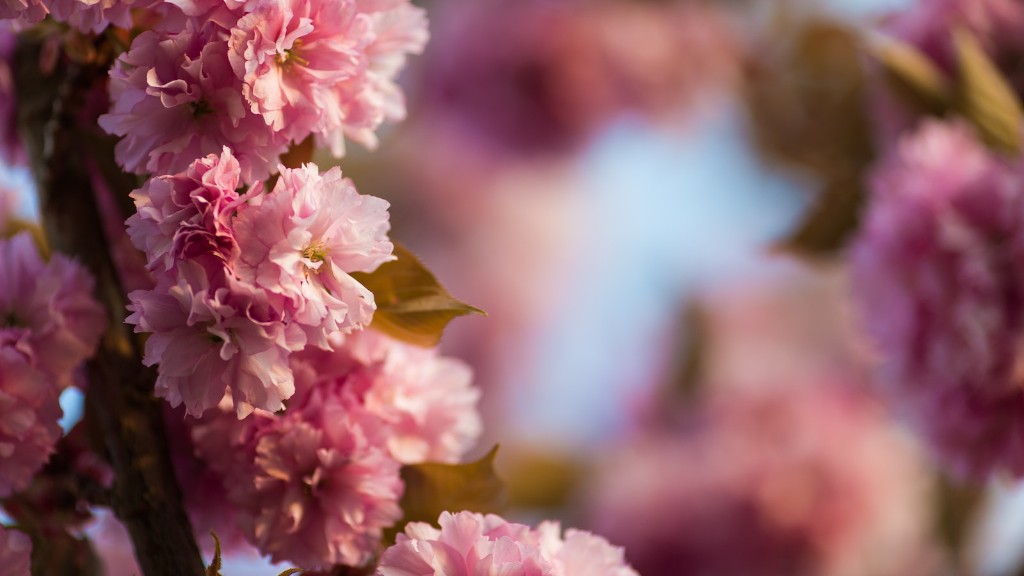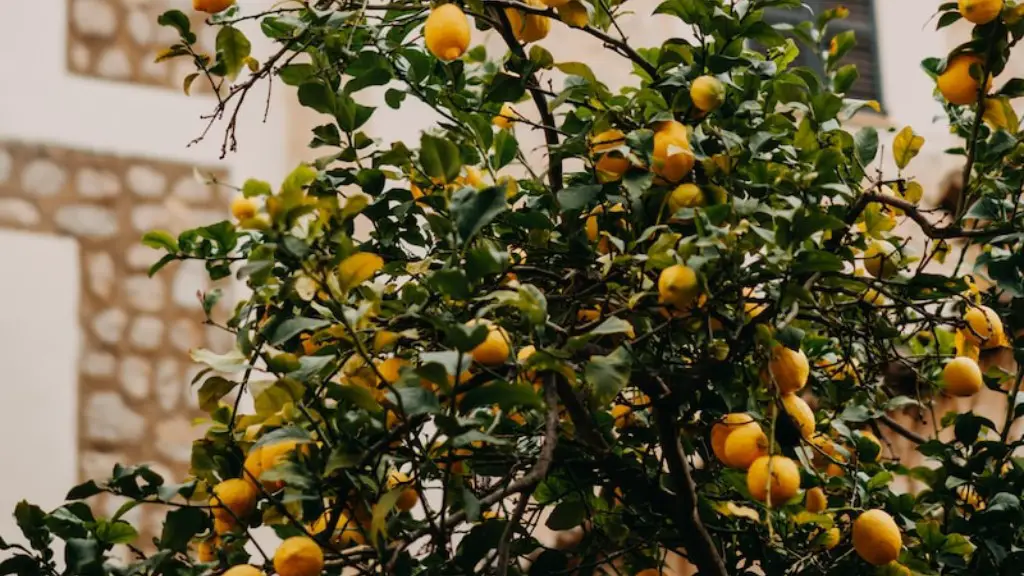Watering your citrus tree is essential for its health, especially if it’s growing outside in a pot. Knowing how much water to give your lemon tree will require you to pay attention to the climate and environment in which it’s growing. You’ll want to be sure to give your tree enough moisture to ensure it is thriving, but not too much that the roots rot. Here’s a guide to how much water you should give your lemon tree.
The biggest factor in determining how often you should water your lemon tree is the soil itself. Check the moisture content of your soil before watering; a moisture meter can be a useful tool. A healthy citrus tree needs soil that is kept evenly moist, but not soggy. Water when the top few inches of your soil are dry, and when you water, always do so slowly. This helps the water to absorb more fully into the soil and less likely to run off the edge of the pot.
If the tree is grown in a container, then you’ll need to pay extra attention. Containers can dry out quickly, so be prepared to water more often in these cases. The best way to see how much water to give is to lift the pot when soil is dry—typically about every other day—and slowly water the tree until moisture begins to come out the bottom of the pot. Then allow the pot to drain before replacing it.
During warmer months, you may need to water your lemon tree as often as every day. Know that frequent light watering is better than infrequent heavier watering. Plants also take up more water early in the day, so if possible try to water the tree in the morning or late afternoon. Finally, if you’re in an area receiving a lot of rain, you may not need to water the tree yourself. However, if the soil becomes waterlogged, be sure to empty the excess water.
Indoor Or Outdoor
Indoor lemon trees need less water than those planted outdoors, since they are sheltered from the rain and direct sunlight. Check the soil twice a week with your finger or a moisture meter, and water when the top inch of the soil feels dry. Water slowly, just as you would with a tree planted outside, and allow the pot to completely drain before putting it back in its spot.
Outdoor citrus trees have slightly more complex water needs. Depending on your local climate and the season, you may need to water your lemon tree every other day or once a week. During the summer months, when temperatures are high and there’s more direct sunlight, you’ll need to water your tree more frequently. But in the winter, when temperatures are cooler and you’re receiving less natural rain supply, you may need to water less. Make sure to check the soil regularly and refer to the water needs of your particular climate.
It’s important to note that any sudden changes in the weather, like drastic temperature shifts or a drought, can alter your watering needs. Consult a local expert if you’re not sure how to care for your lemon tree during extreme conditions.
What About Fertilizer?
Fertilizer is important for a healthy lemon tree, but you don’t want to overdo it. Feed your lemon tree every two months during the spring and summer and once a month during the winter months. This will give your tree time to absorb the fertilizer without the risk of burning the roots.
Make sure to give your tree the right kind of fertilizer. Citrus trees thrive off nitrogen-based fertilizers, so look for something that includes nitrogen in the ingredients. You can use fertilizers specially made for citrus, or any all-purpose fertilizer that has nitrogen in it.
Be careful not to spread any fertilizer when your tree is dry; this can also damage the roots. When spreading plants around a citrus tree, mix them in the soil before watering.
Signs Of Stress
If you’re watering correctly, your lemon tree should be healthy and show signs of new growth. However, if your lemon tree isn’t getting the right watering, you may see signs of distress. Signs of over-watering include yellowing leaves and weak new growth, and signs of under-watering usually include wilted leaves and no new growth.
If you’re worried about incorrect watering, take a few days to measure your tree’s reaction. If things don’t improve, get advice from a local plant expert. They’ll be able to assess your tree’s health and suggest other tactics.
Preventing Pests and Diseases
Lemon trees are vulnerable to pests and diseases, and incorrect watering is a main culprit. If the tree isn’t getting enough water, it will be weaker and more likely to get insects and viruses, while over-watering leads to diseases such as root rot. Continuously changing the soil’s moisture levels can also put stress on the tree and leave it vulnerable to attack.
Keeping the soil evenly moist and making sure the tree has the right amount of water can go a long way towards preventing any problems. Regularly check your lemon tree for signs of infestation or disease and get advice from a local expert if needed. Keep your gardening tools clean and spray your lemon tree with horticultural oil as needed.
Using Mulch
Mulch can be a great tool for keeping your lemon tree healthy. Adding a 2-4 inch layer of mulch around the tree’s trunk and base can help retain moisture and protect the tree’s roots. Mulch can also help deter pests and weeds, giving your lemon tree the room it needs to flourish.
Be sure to check the soil under the mulch periodically to be sure it is receiving adequate moisture. Consider either a light-colored mulch that reflects the sunlight and prevents the soil from getting too hot, or a darker mulch that will absorb heat and keep the soil warm. Both can be useful for creating the right atmosphere for your tree.
Wrapping Up
Watering your lemon tree correctly and giving it the proper nutrients will help ensure your tree is healthy and productive. Keep an eye on the soil to make sure it is staying hydrated, and know that watering a little more often with smaller amounts of water is better than watering too heavily and too infrequently. And finally, don’t forget to use mulch and be aware of the signs of pests and diseases.




